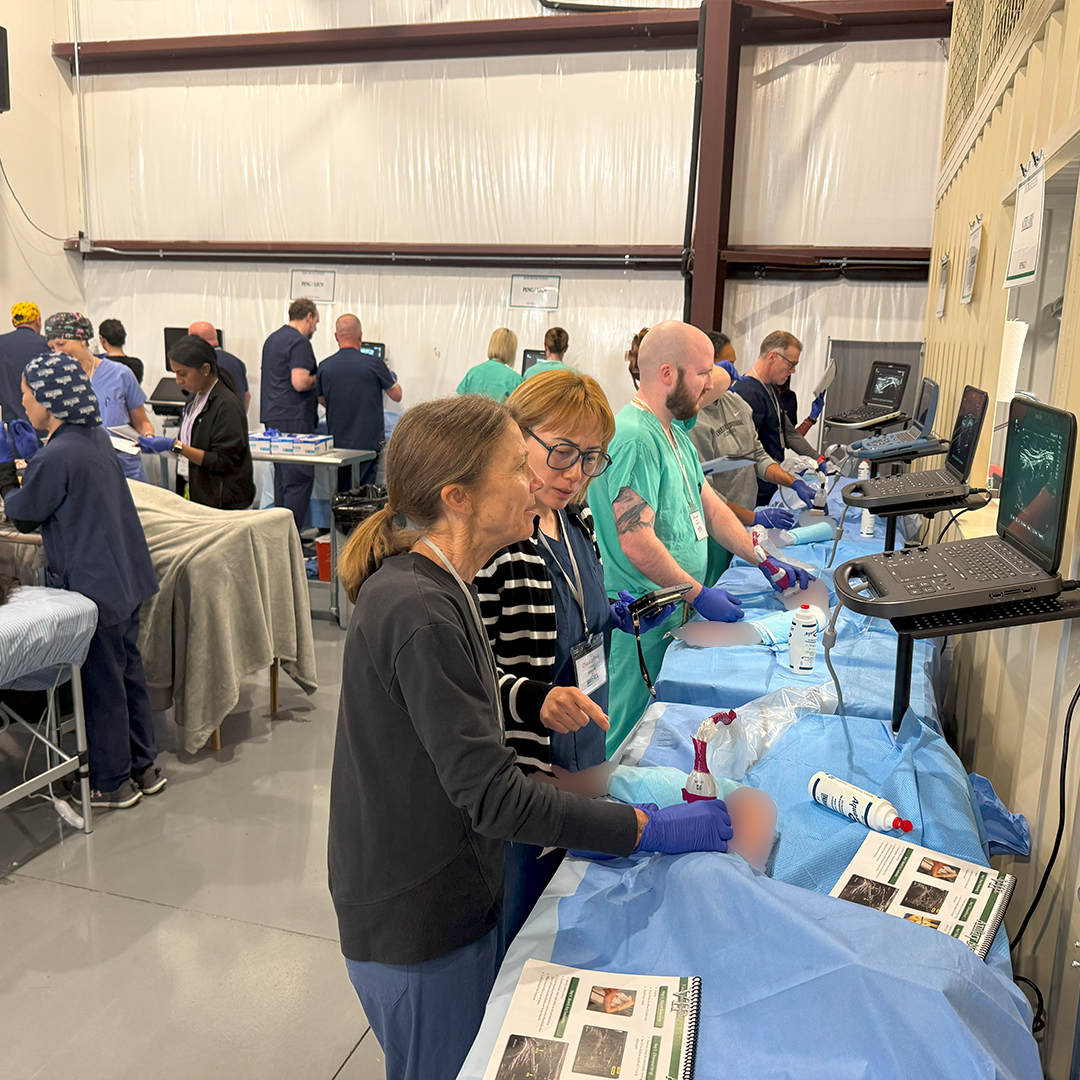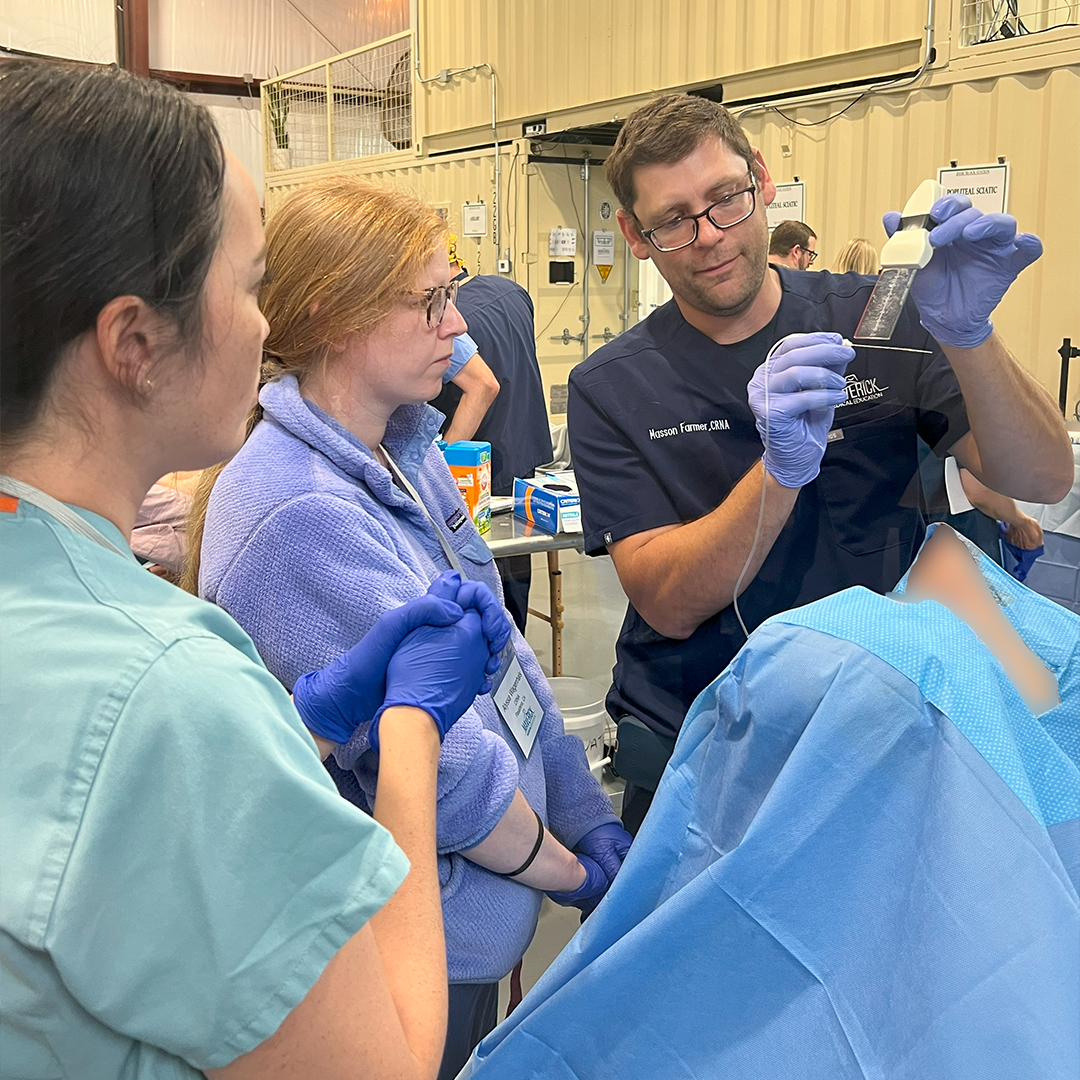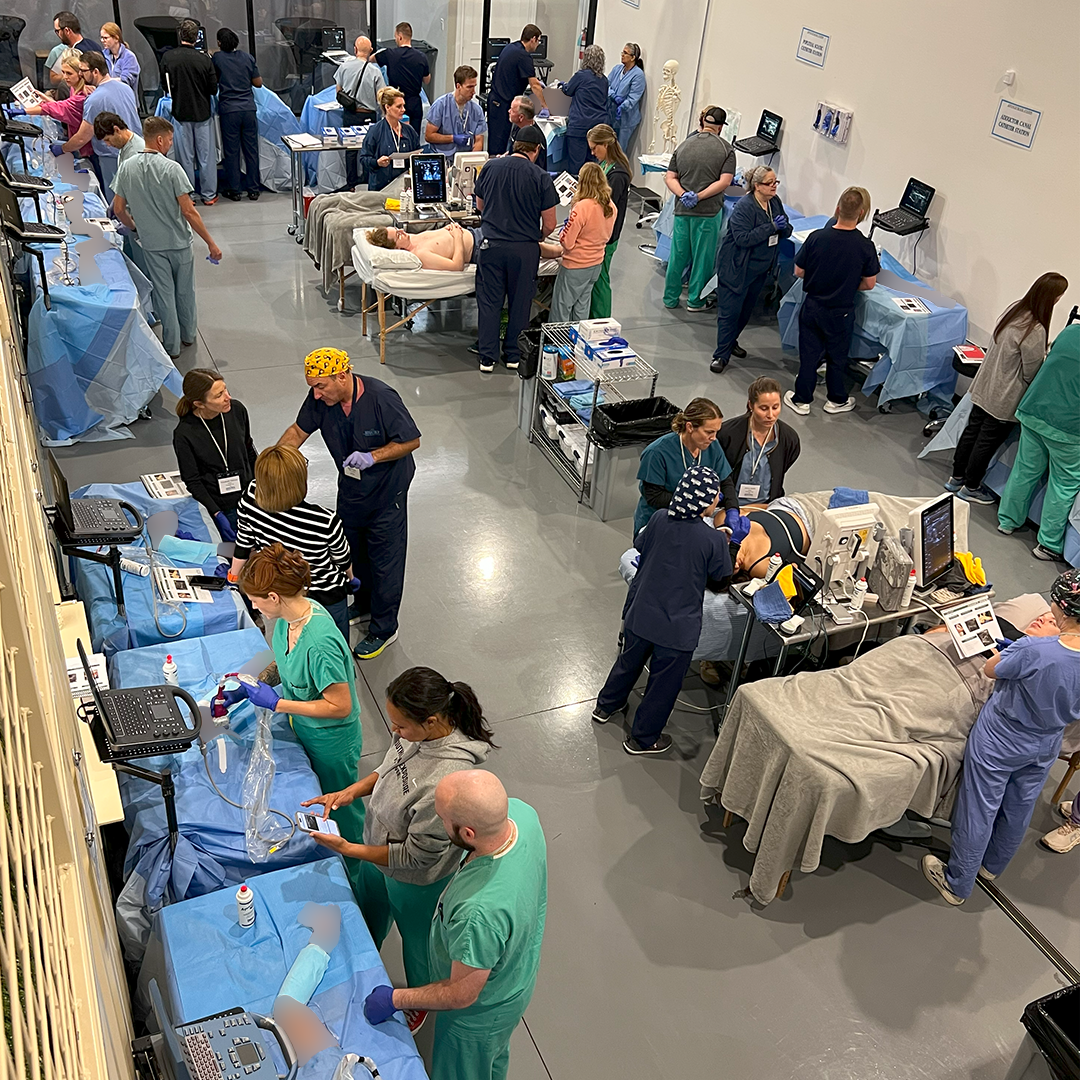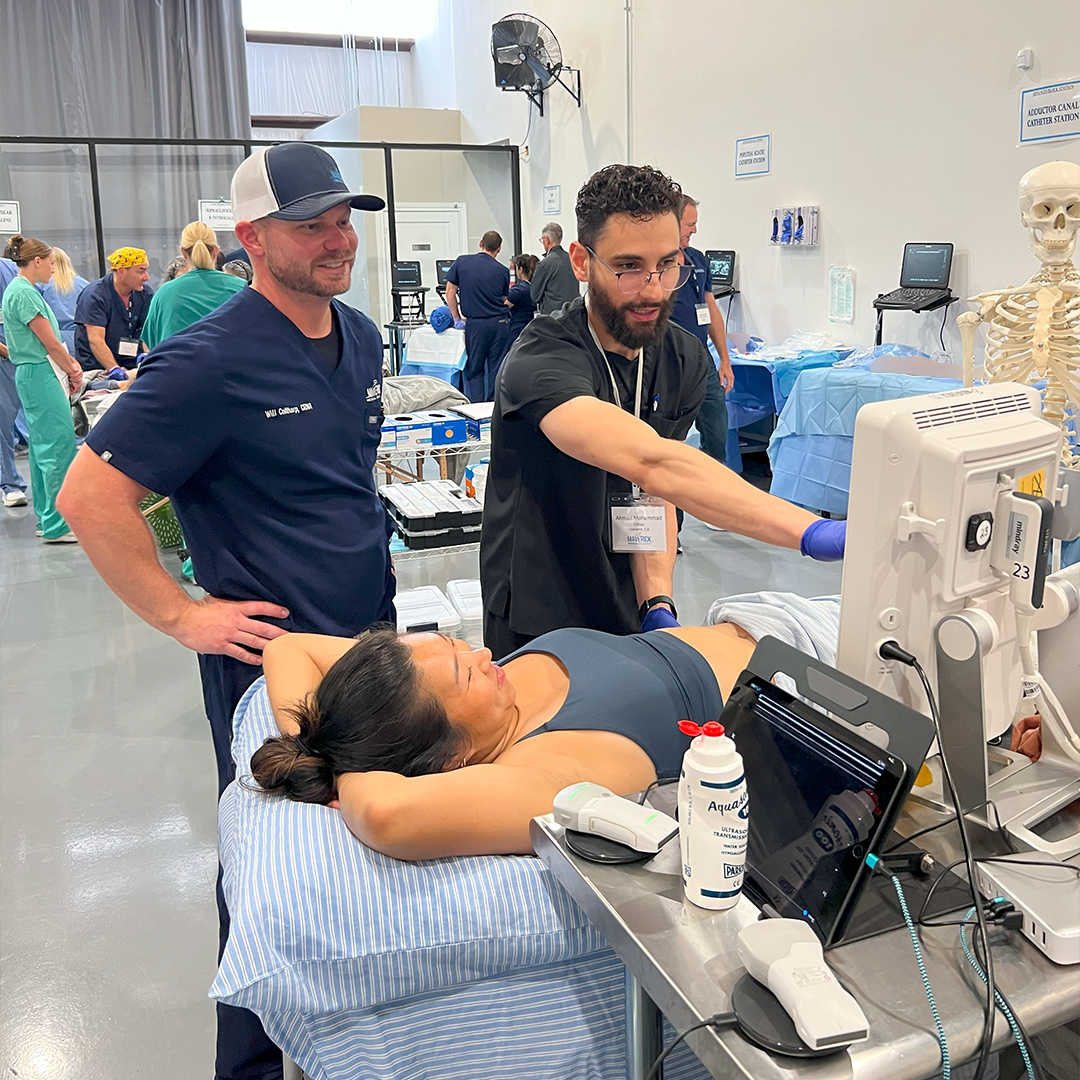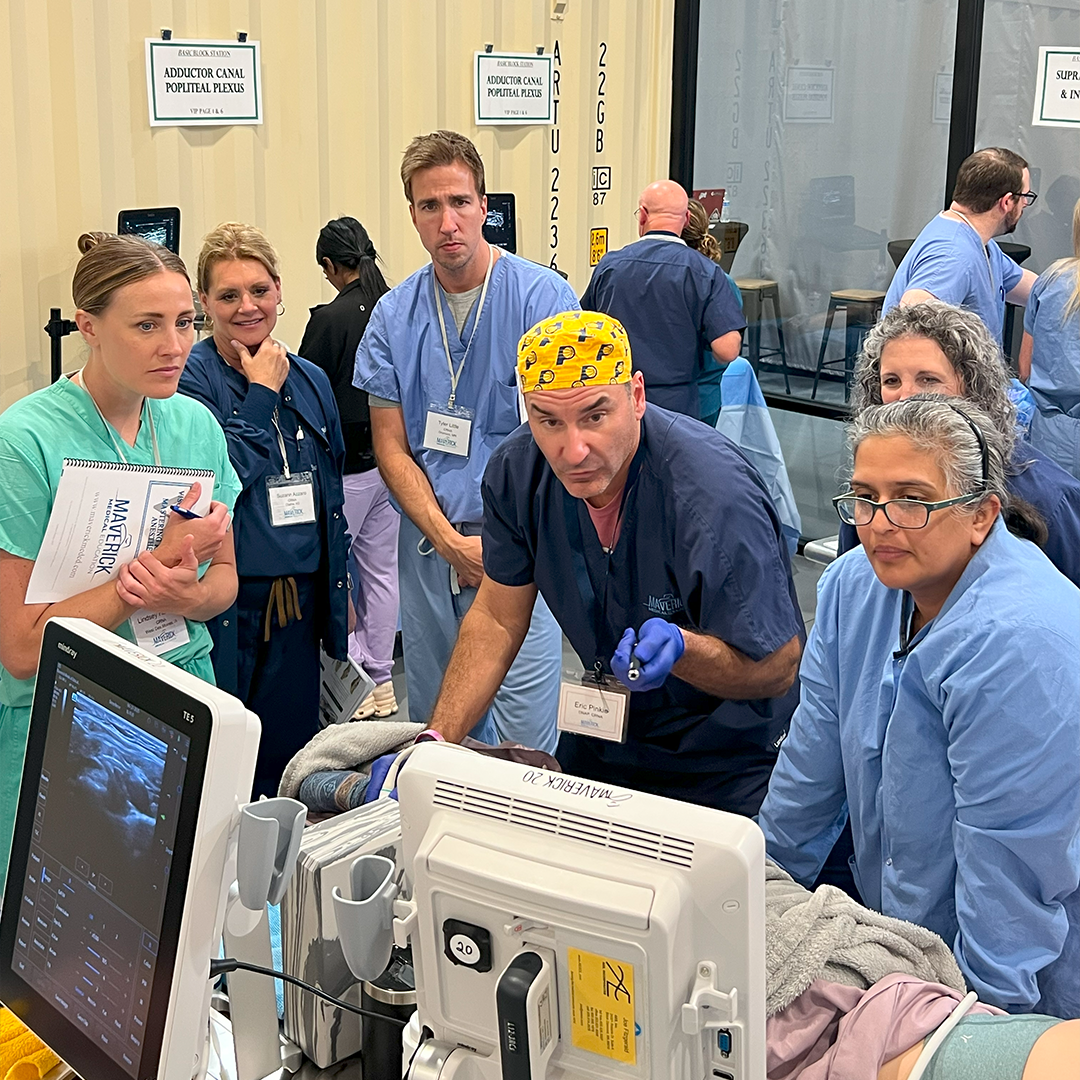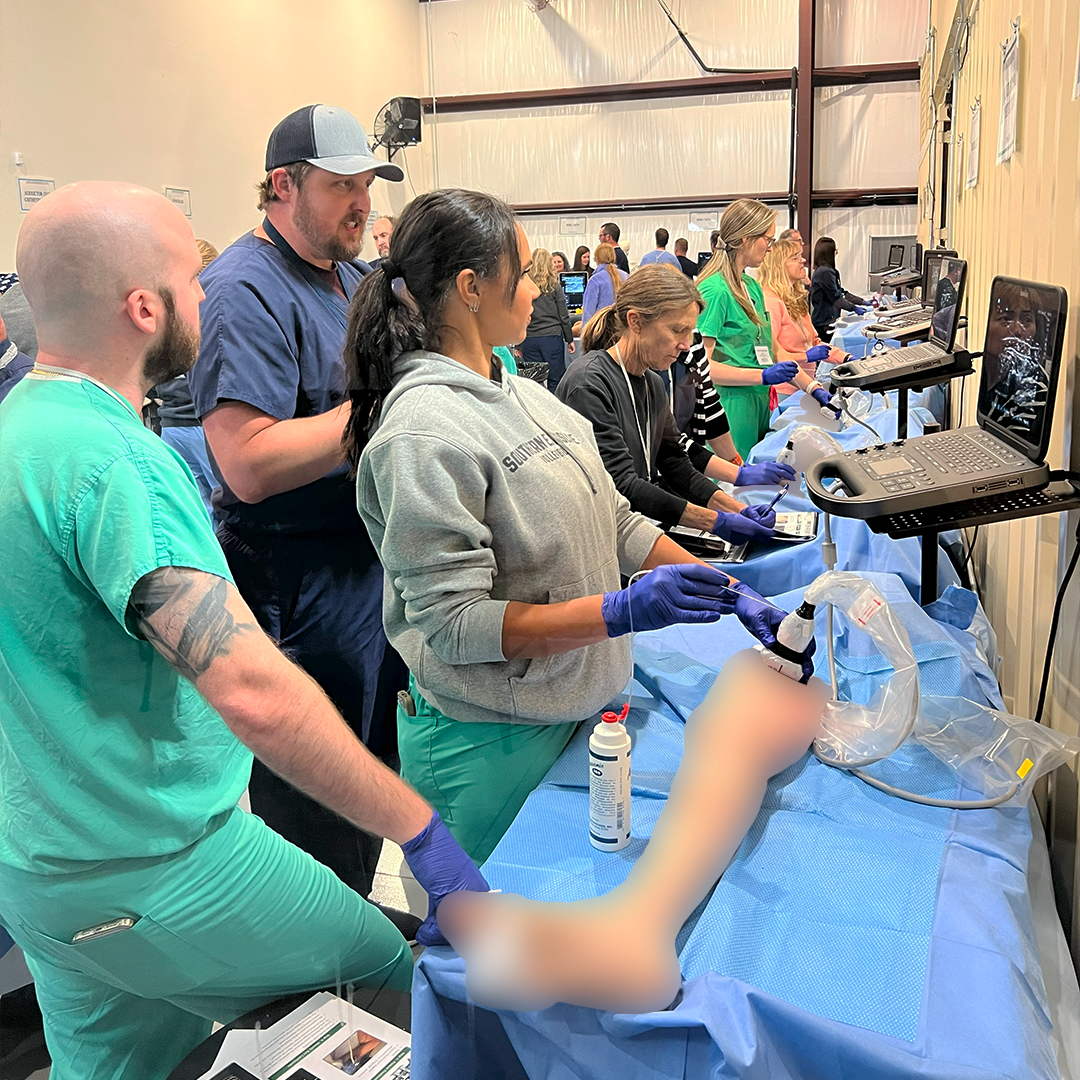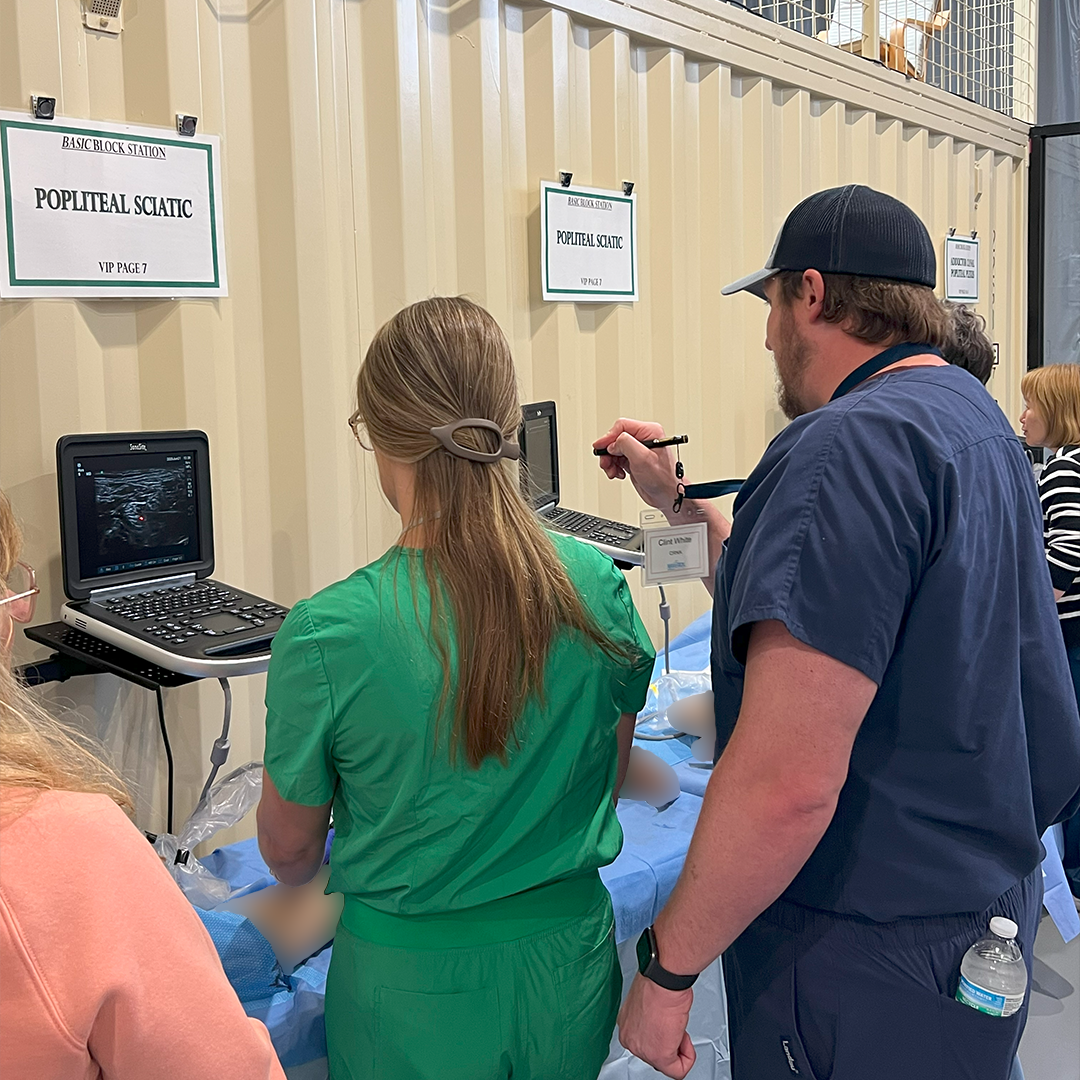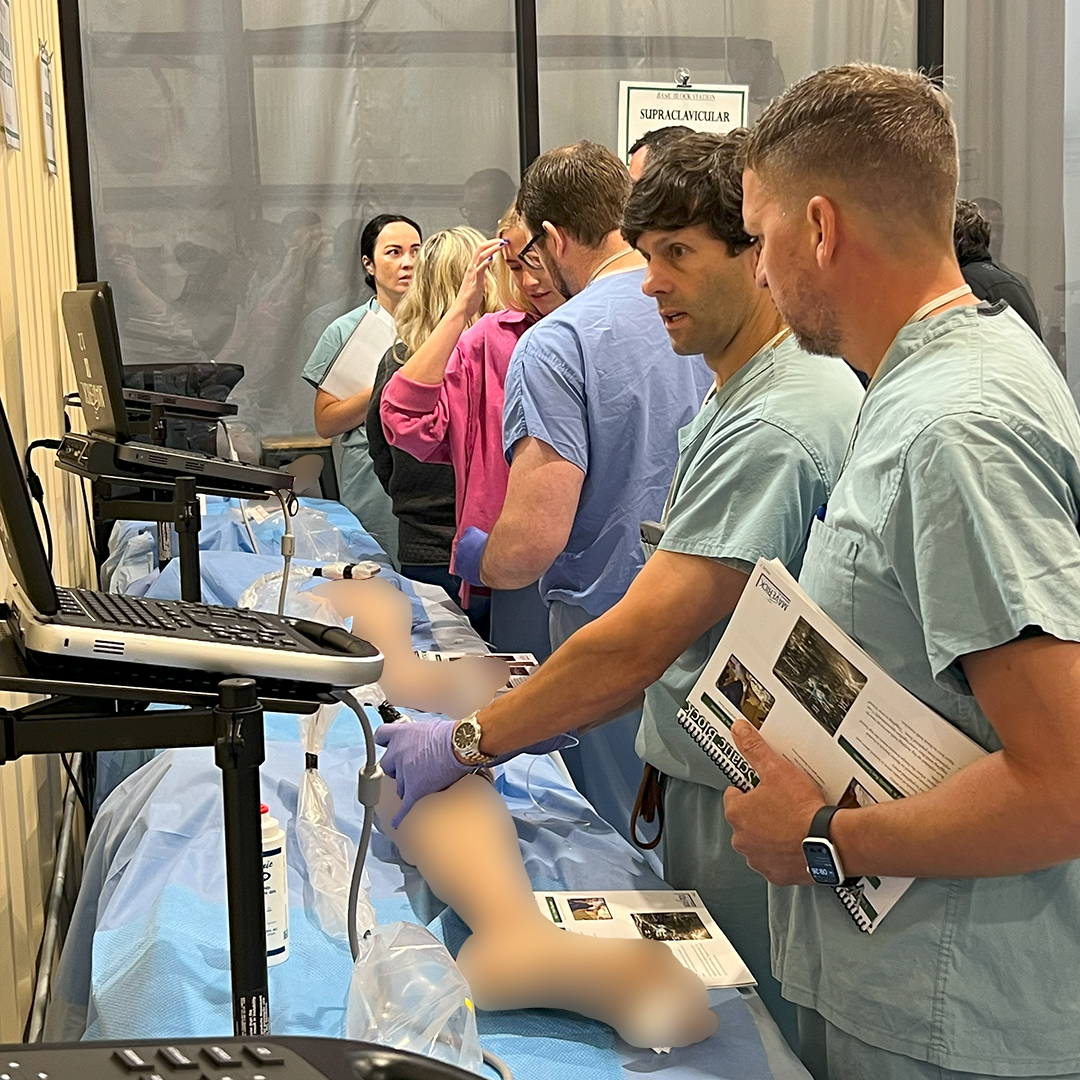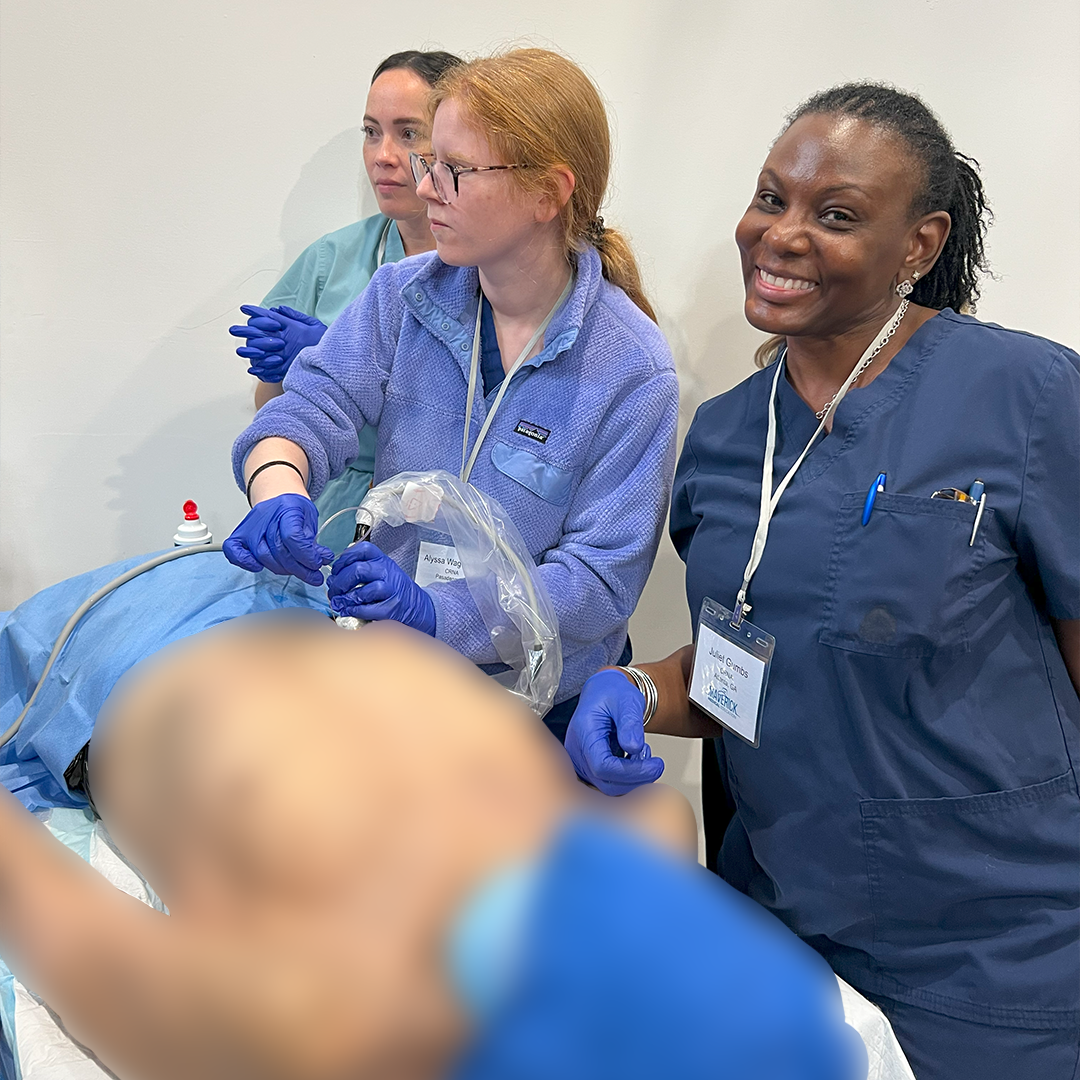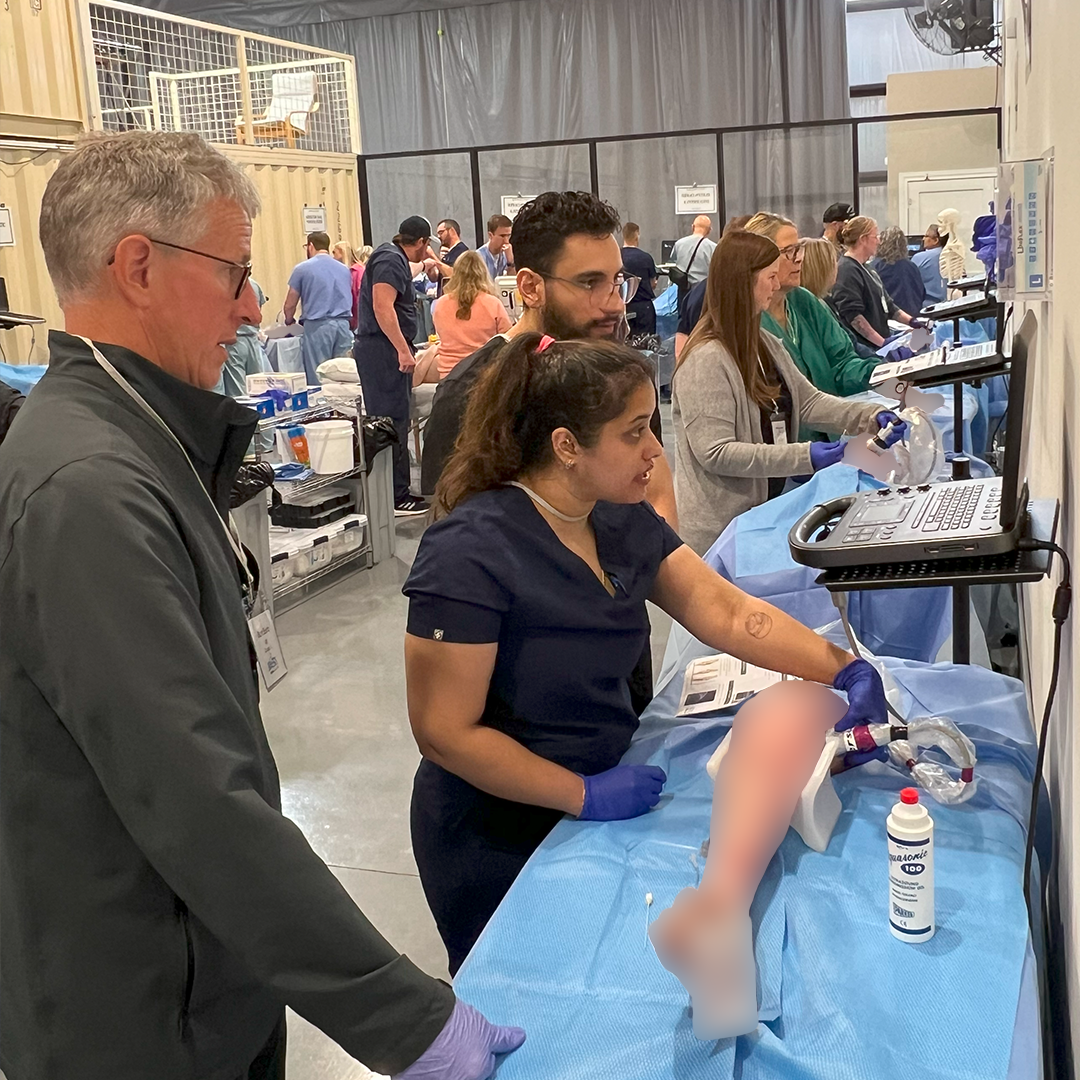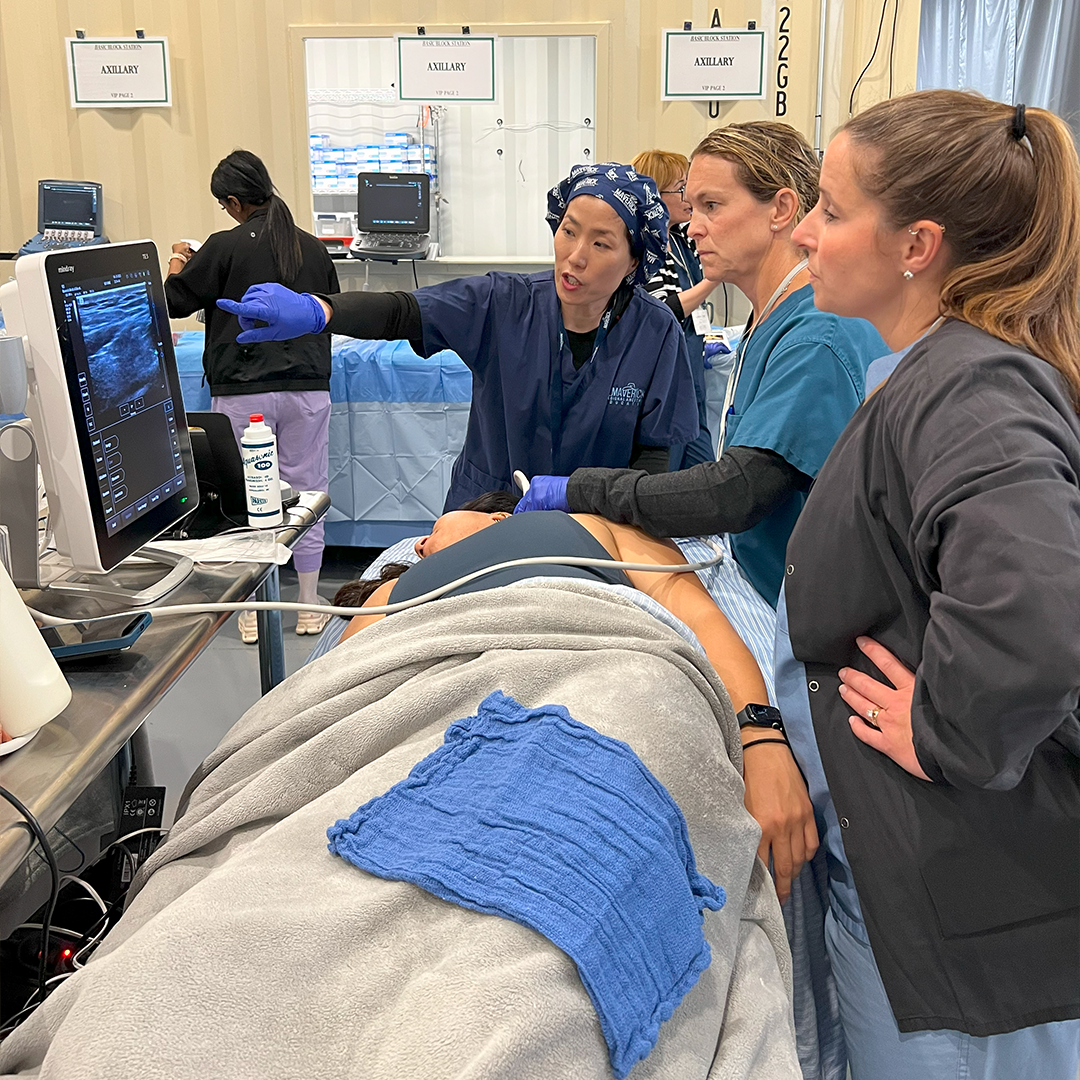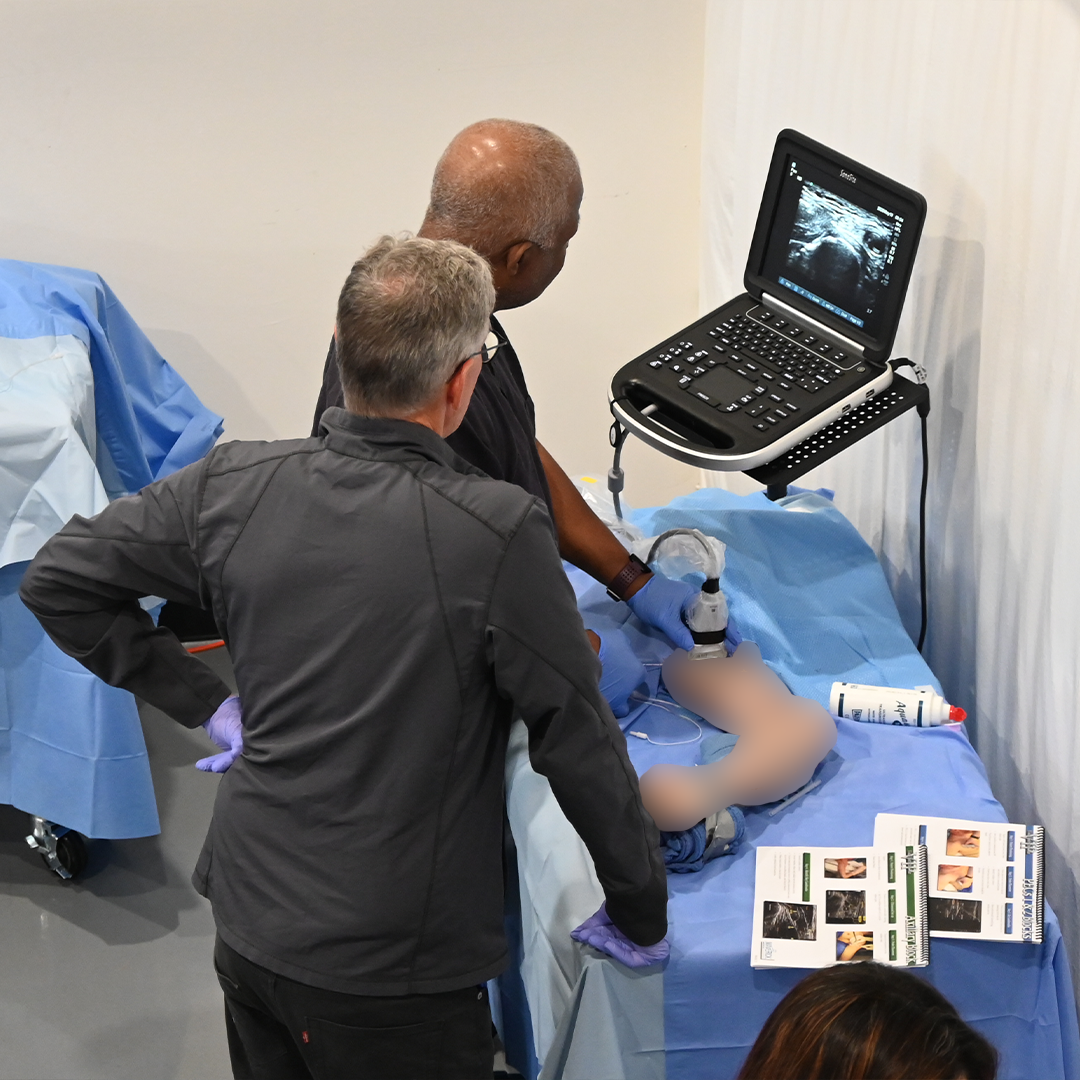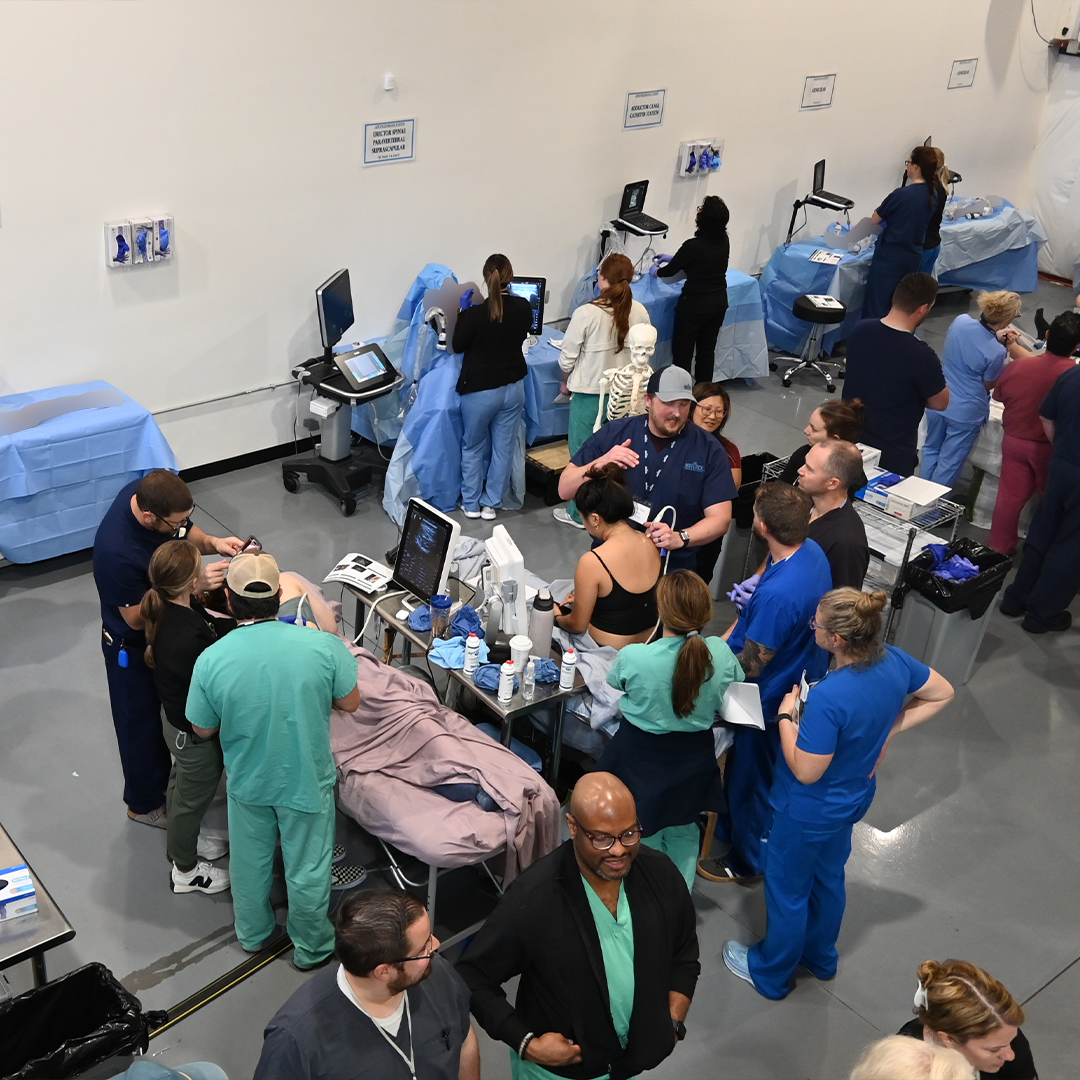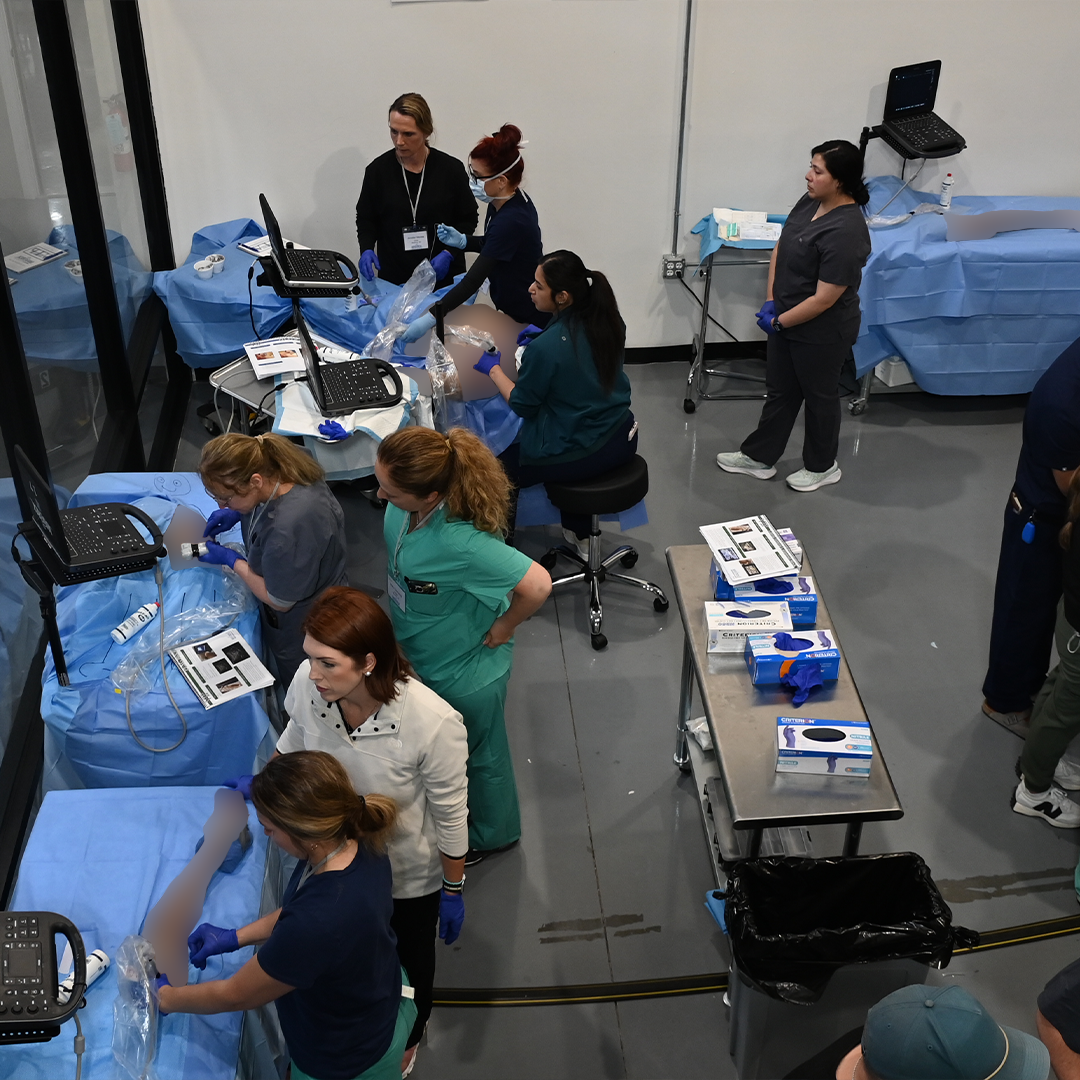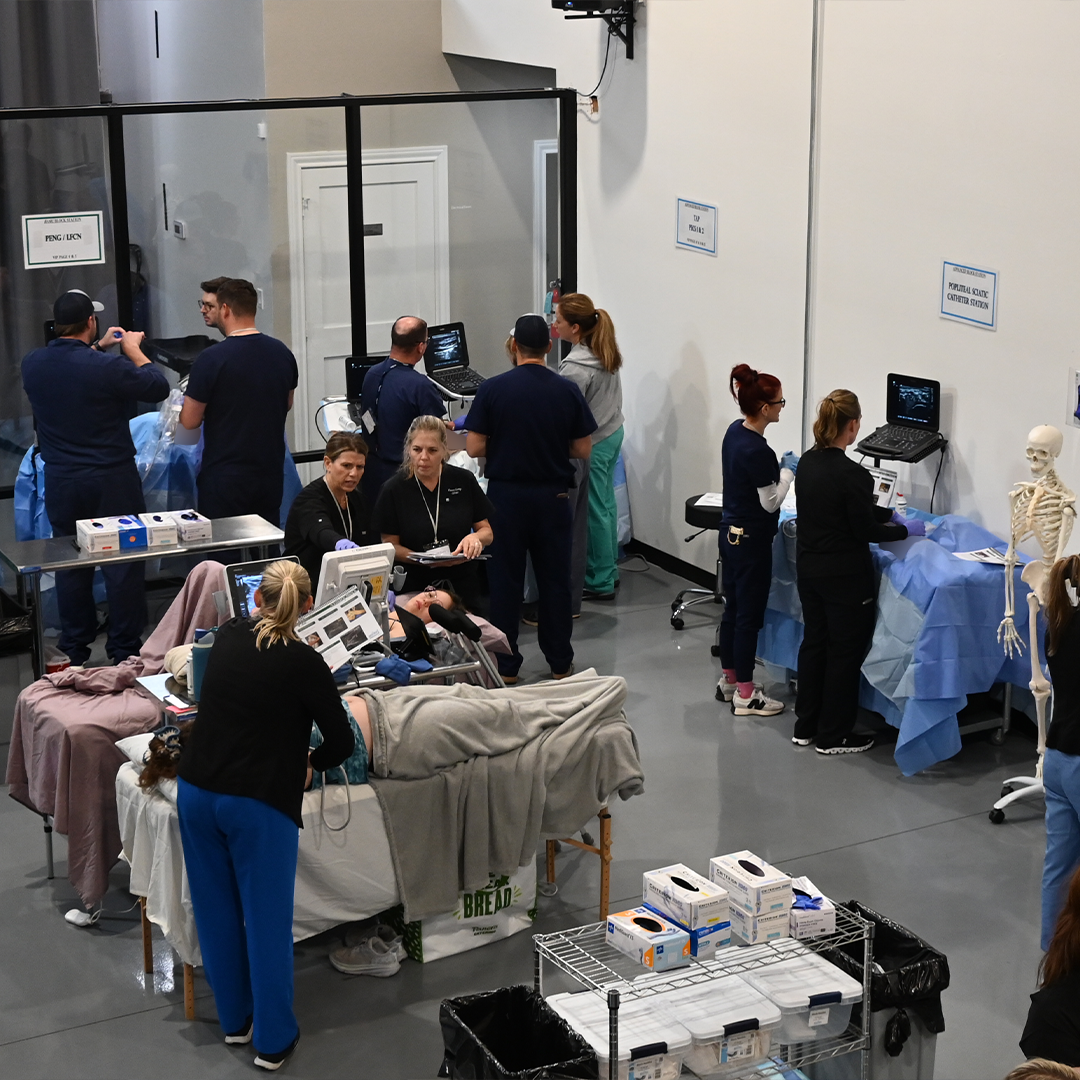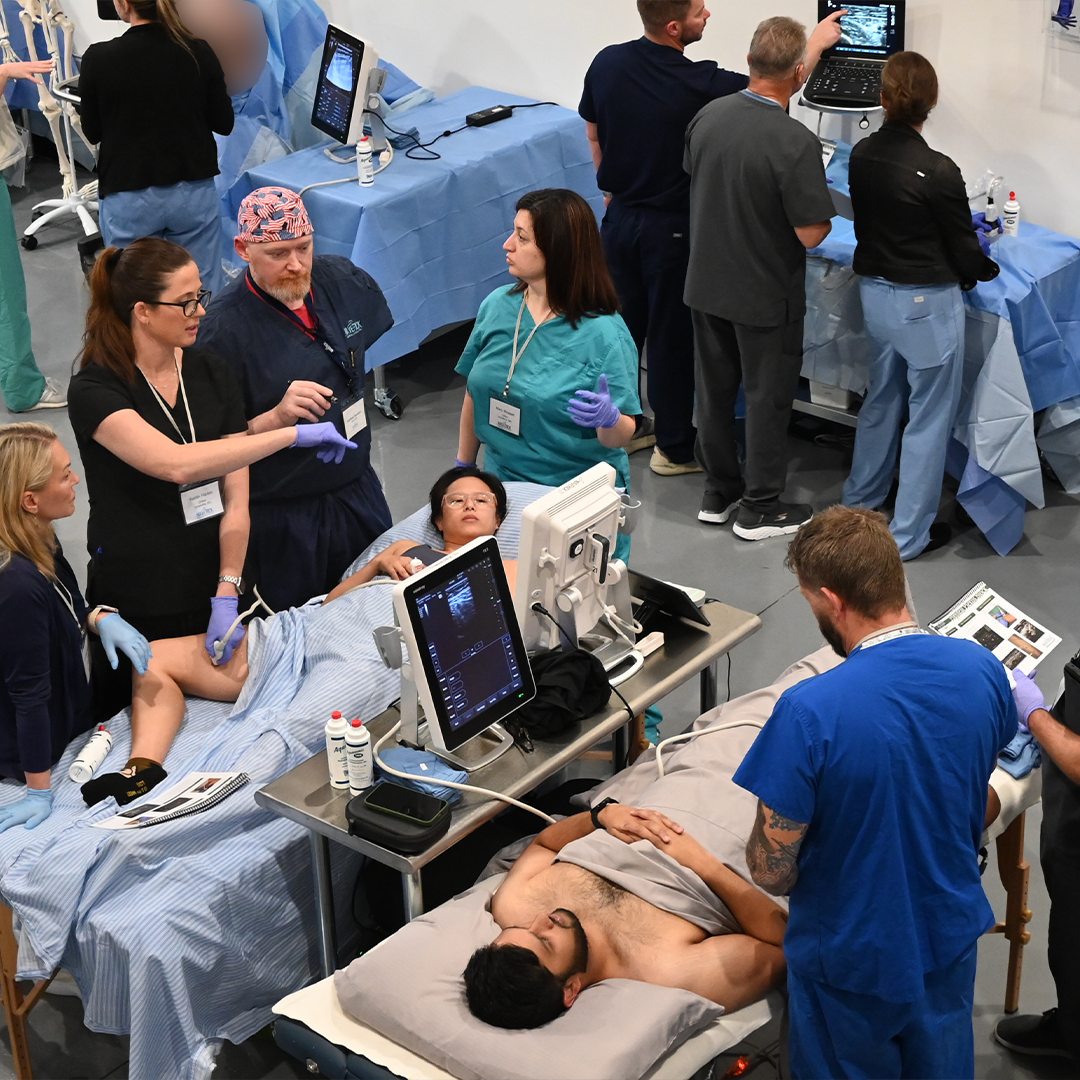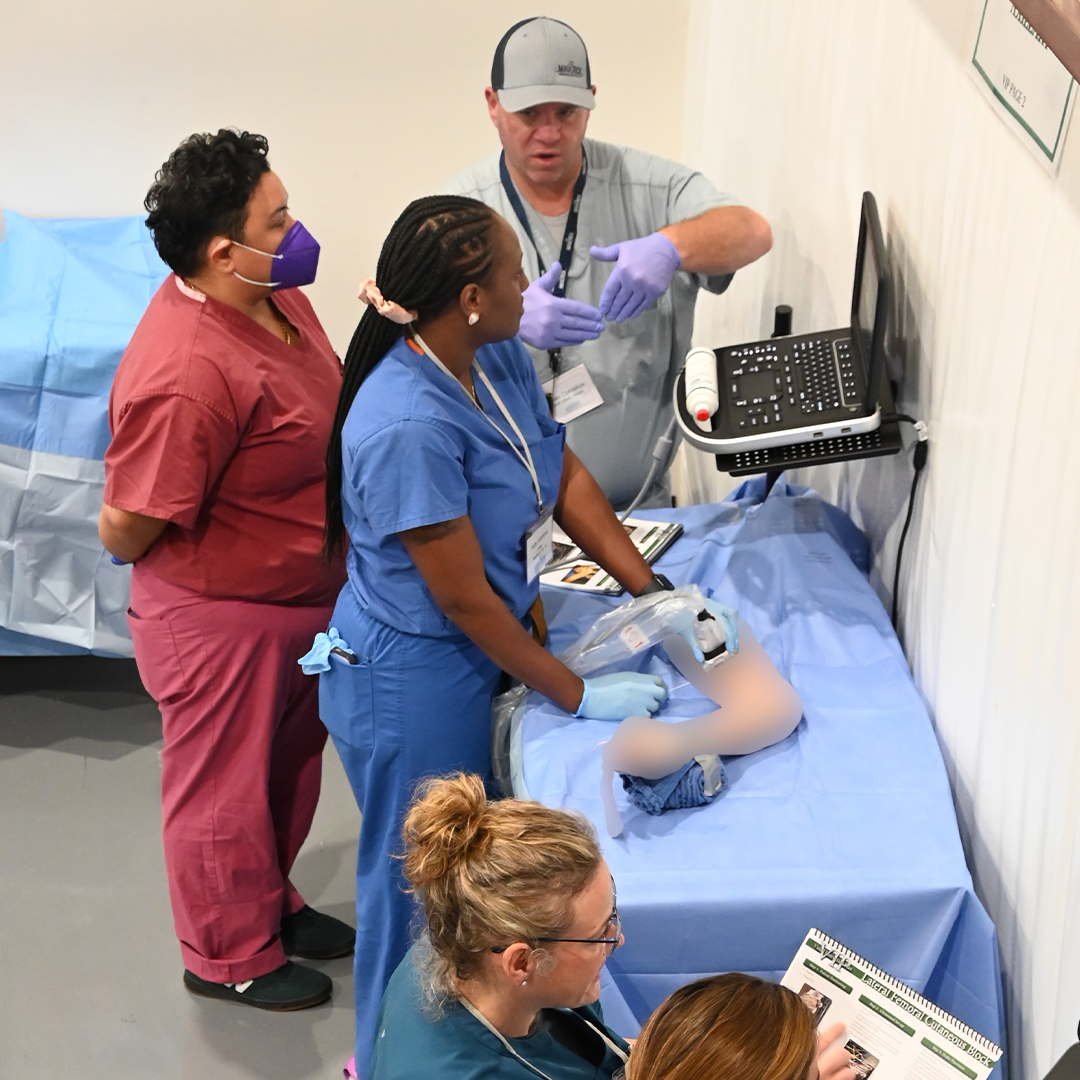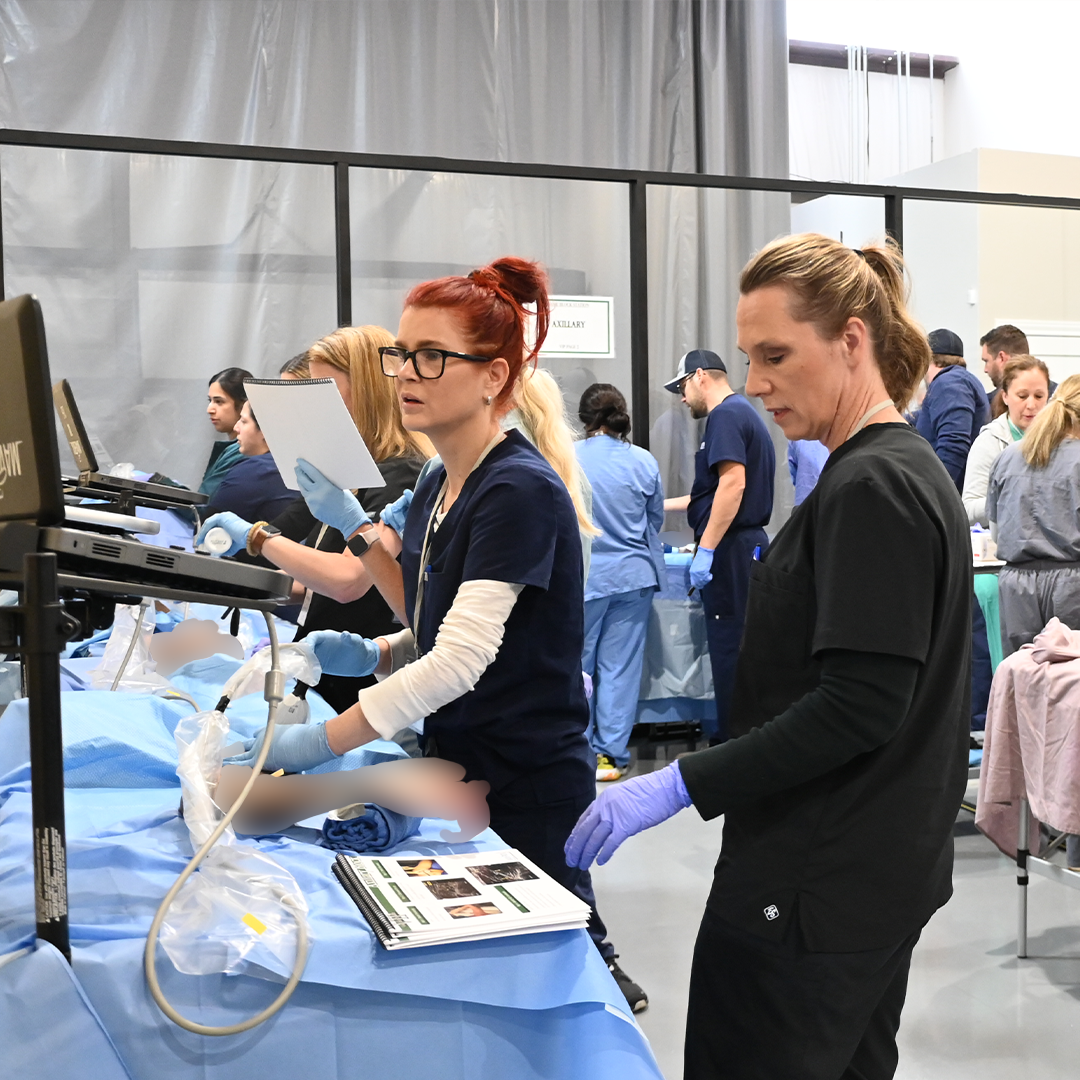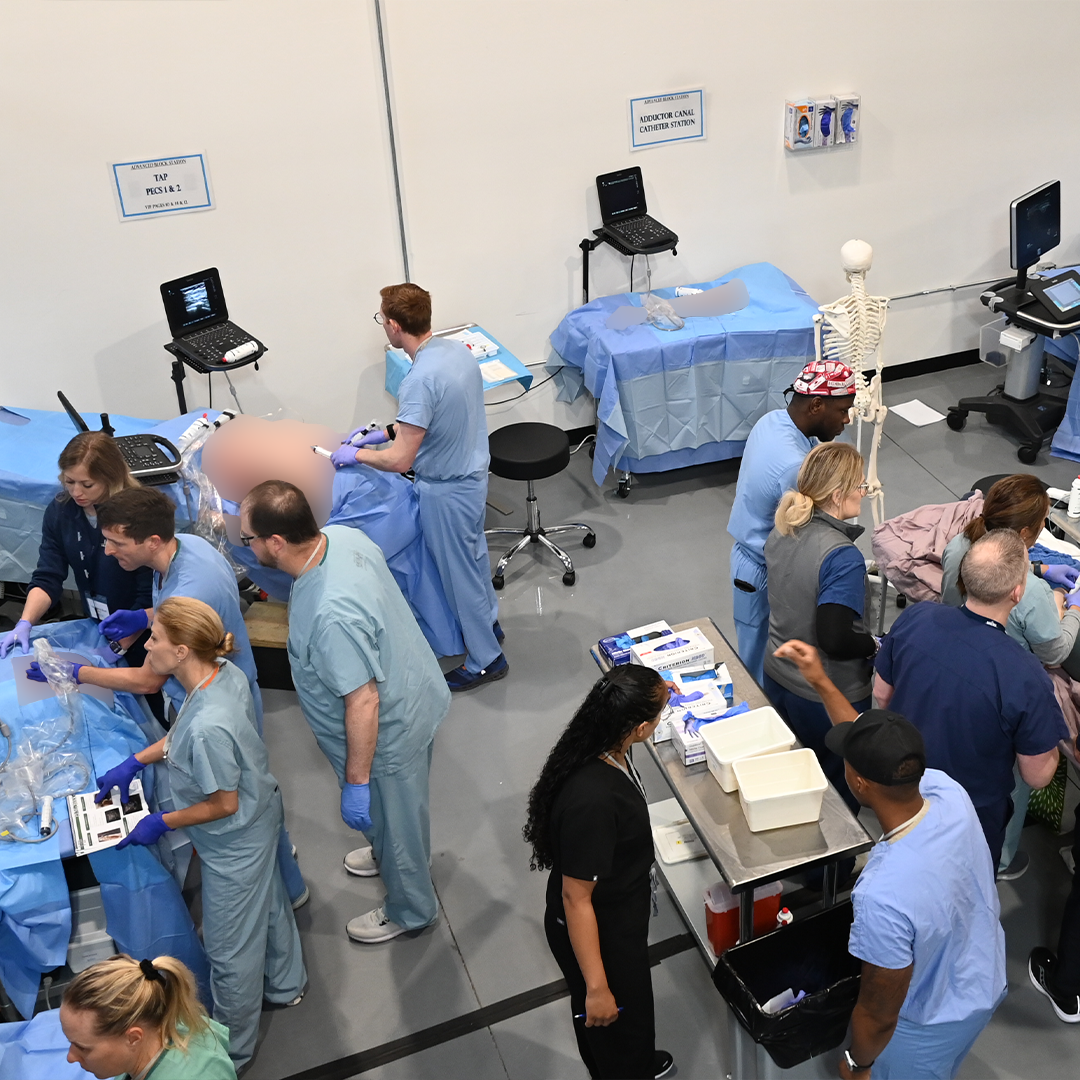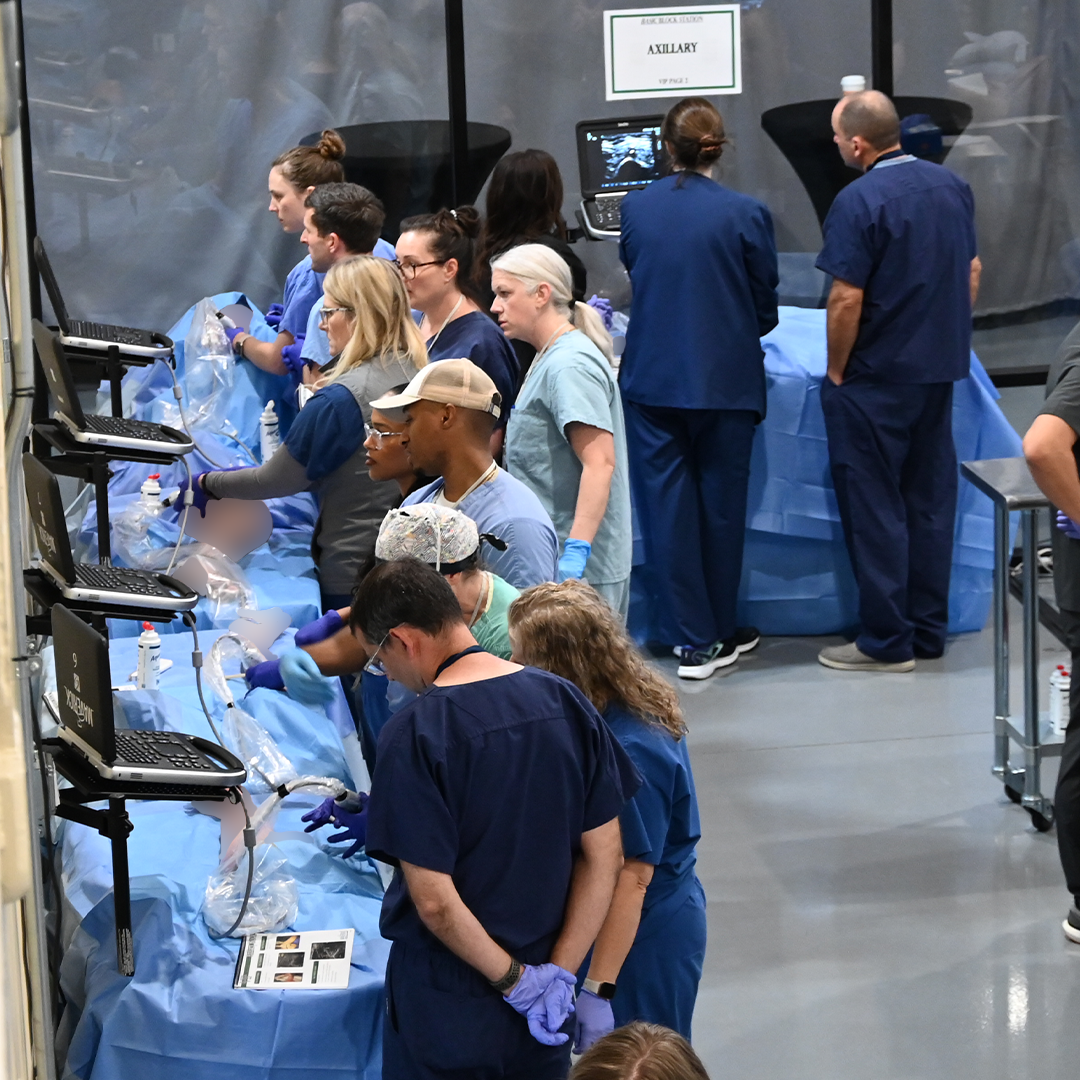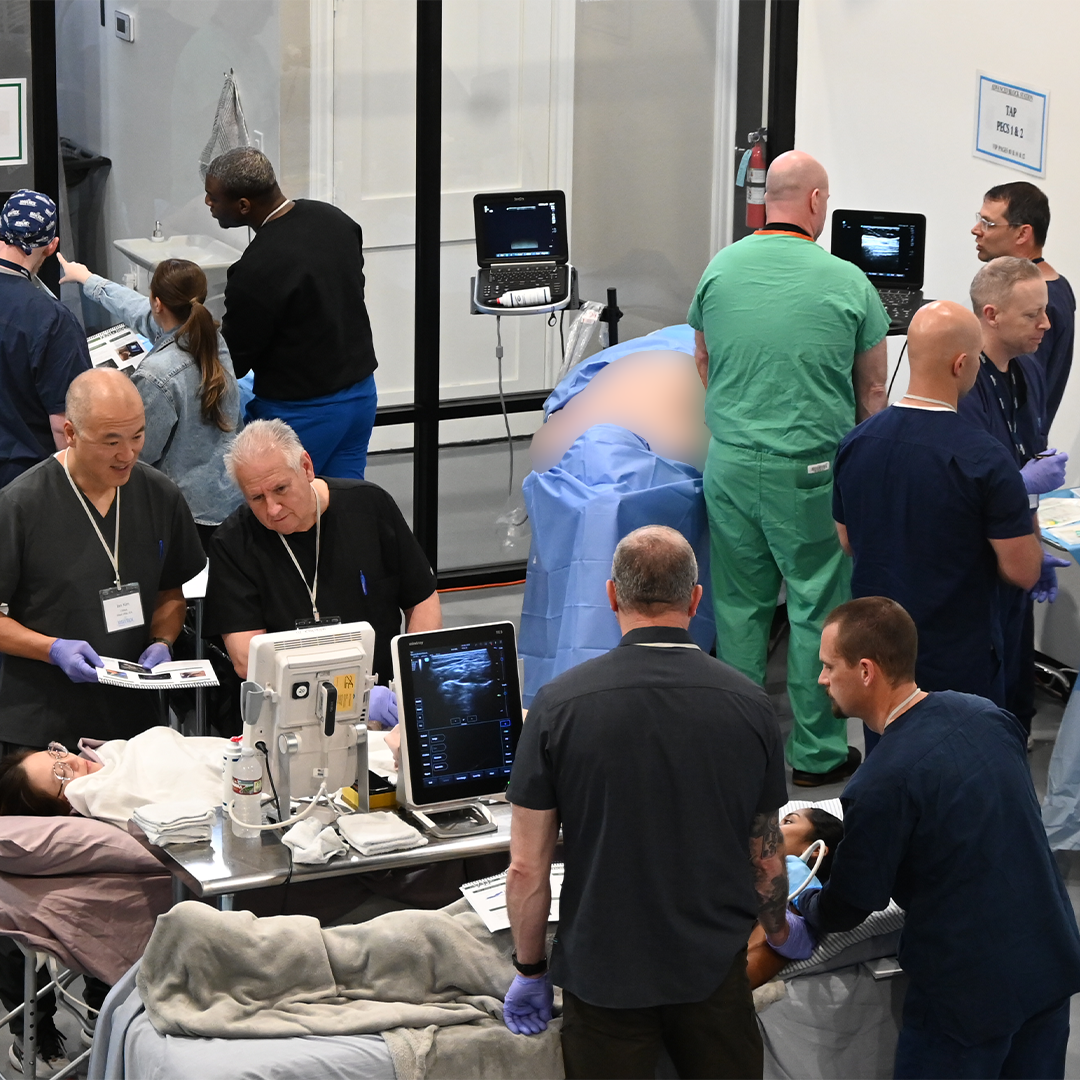The Mastering Regional Anesthesia Techniques course is designed for healthcare professionals seeking to master the skills of regional anesthesia. The curriculum integrates both our former Regional Anesthesia Essential Techniques and Advanced Techniques courses, offering a more comprehensive education on ultrasound guided nerve blocks. Through the combination of online didactic modules, hands-on practice with cadavers utilizing Maverick’s patented pulsatile system, and live models, participants will refine their skills under the guidance of experienced instructors providing a well-rounded and immersive learning experience.
Gain the Most Confidence in our Life-Like Pulsatile Cadaver Labs
Click the drop downs below to explore the components of the course!
In the foundational portion of the course, you’ll focus on the core skills necessary for safe and effective regional anesthesia. Key areas of learning include:
- Ultrasound-guided nerve block techniques
- Anatomical landmarks for regional anesthesia
- Peripheral nerve blocks
- Safety protocols and complication management
The foundation is designed for practitioners new to regional anesthesia or those looking to strengthen their established skills. You will engage in hands-on learning with expert instructors, gaining confidence in executing the following basic nerve blocks:
- Axillary
- Adductor Canal
- Genicular
- Interscalene
- PENG/LFCN
- Popliteal Plexus
- Popliteal Sciatic
- Supraclavicular
Building on the basic foundational knowledge, the advanced portion of the course takes your skills further with more complex blocks and specialized techniques. You will:
- Learn advanced ultrasound-guided techniques for deeper and more challenging nerve blocks.
- Explore continuous catheter techniques for longer-term pain management.
- Delve into new and emerging methods in regional anesthesia.
- Gain insight into advanced clinical decision-making and problem-solving in challenging scenarios.
This segment is designed for practitioners more experienced in regional anesthesia or those looking to strengthen their basic skills. You will engage in hands-on learning with expert instructors, gaining confidence in executing the following advanced plane nerve blocks:
- Erector Spinae
- Paravertebral
- PECs 1&2
- Quadratus Lumborum (live model scanning only)
- Suprascapular
- TAP
- Catheter Placement
All blocks will be taught during this 2-day course and participants have the option to perform nerve blocks specific to their practice’s needs. It is not recommended that beginners to regional anesthesia attempt the more advanced nerve blocks until comfortable with the foundational blocks. This course may be taken multiple times to complete the full range of blocks taught.
A 20% discount is given to all returning attendees of this course.
Note: The online-only course does not include a hands-on cadaver lab, which is included in our “complete course” listed above.
In the foundational portion of the course, you’ll focus on the core skills necessary for safe and effective regional anesthesia. Key areas of learning include:
- Ultrasound-guided nerve block techniques
- Anatomical landmarks for regional anesthesia
- Peripheral nerve blocks
- Safety protocols and complication management
The foundation is designed for practitioners new to regional anesthesia or those looking to strengthen their established skills. This foundational content explains how to perform the following basic nerve blocks:
- Axillary
- Adductor Canal
- Genicular
- Interscalene
- PENG/LFCN
- Popliteal Plexus
- Popliteal Sciatic
- Supraclavicular
Building on the basic foundational knowledge, the advanced portion of the course takes your skills further with more complex blocks and specialized techniques. You will:
- Learn advanced ultrasound-guided techniques for deeper and more challenging nerve blocks.
- Explore continuous catheter techniques for longer-term pain management.
- Delve into new and emerging methods in regional anesthesia.
- Gain insight into advanced clinical decision-making and problem-solving in challenging scenarios.
This segment is designed for practitioners more experienced in regional anesthesia or those looking to strengthen their basic skills. This advanced content explains how to perform the following basic nerve blocks:
- Erector Spinae
- Paravertebral
- PECs 1&2
- Quadratus Lumborum
- Suprascapular
- TAP
- Catheter Placement

